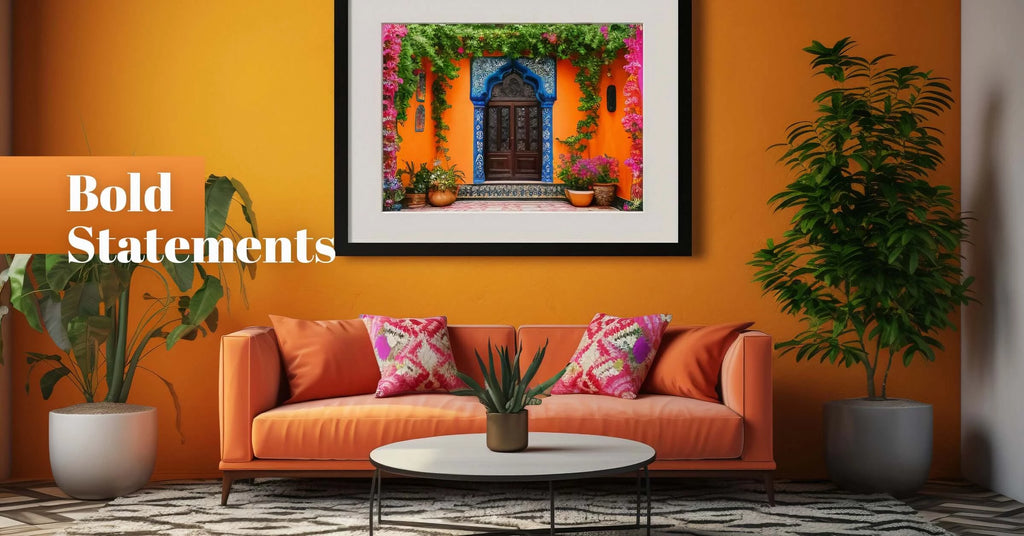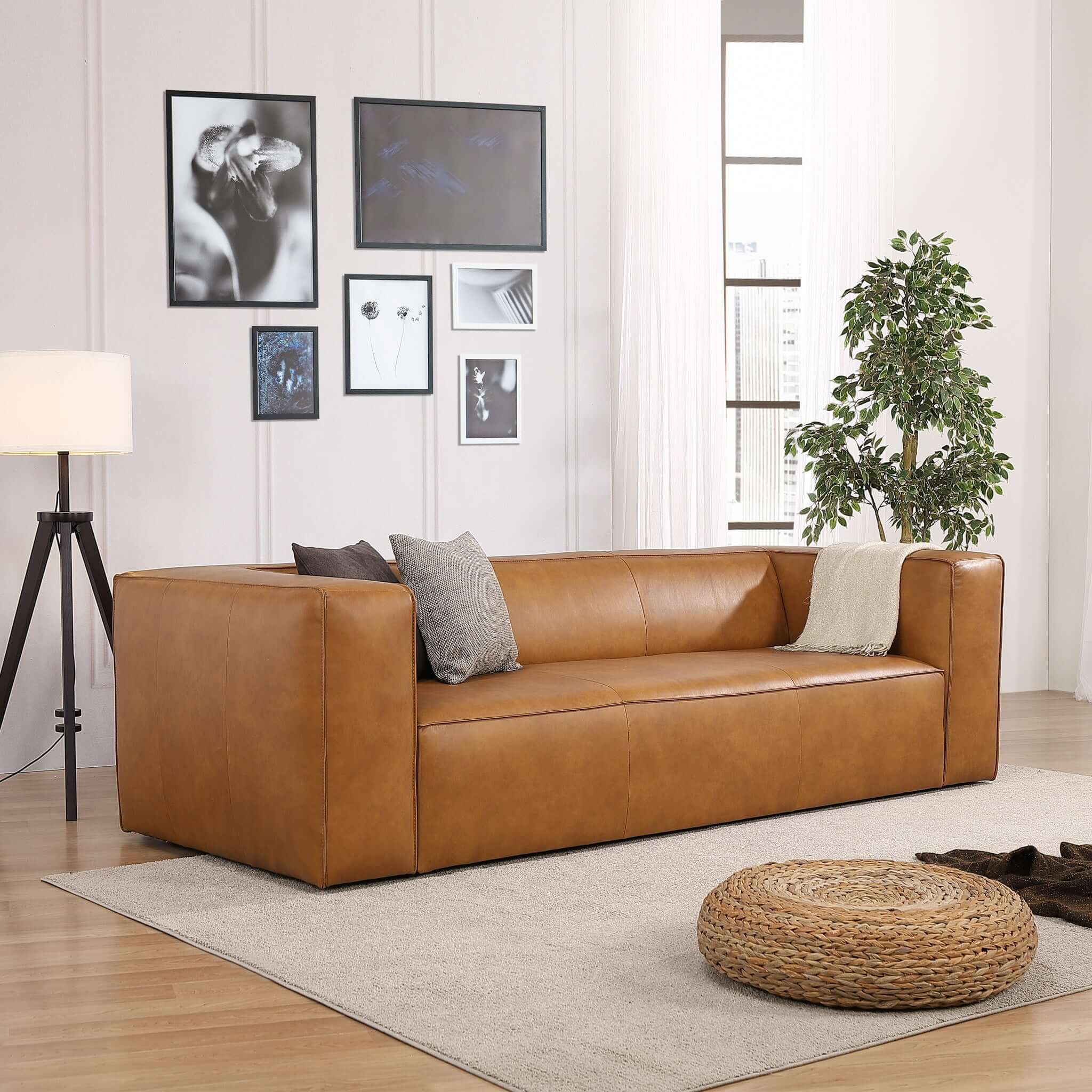The living room is where we spend most of our time relaxing, entertaining with family and friends to collect memories, and watching a movie. That's why choosing color schemes for the living room is more important than you might think. It should reflect your style, give a sense of space, and create a warm environment for your loved ones.
Deciding on a living room color scheme is relevant to the color of the walls and furniture, the type of fabric, and all the decorative items. Color affects the whole interior design and changes the overall look. Therefore, color choice occurs at the center of the decisions you make for your home.
What are the Color Schemes for Living Rooms?
Here are the top 5 color schemes for living rooms.
- Neutral Elegance
A neutral color palette includes black, white, brown, beige, grey, cream, and ivory. This palette suits contemporary and retro-style types of furniture and accessories. Neutral colors easily create an elegant and chic look to the room while adding warmth to the decoration. It is often preferred for minimalistic designs.

In neutral-shaded interior designs, mirrors and fireplaces are a good choice of decorative elements since they successfully complete the light and bright look. Playing with textiles to add colors to neutral-themed living rooms is an easy way to maintain the decoration.
Wooden furniture is useful for creating a warm, timeless appearance with neutral colors. Also, adding different shades of grey, brown, or ivory with different textures accretes depth to the living room.

- Serene Blues
Serene blues represents soft tones of blue and navy. Serene blues form a peaceful and relaxing atmosphere. It is considered effortless to style soft blue hues since they create good combinations of colors and styles, such as pastel tones, neutral palettes, or bold styles. Using different hues of blue rather than having a monochromatic look creates a more memorable design. Additionally, with the combination of wooden tones and soft blues, you can create a coastal house-themed living room.

- Earthy Tones
Earthy tones include beige, brown soil, leaf green, moss, sand, and rust. Earthy tones give a warming and cozy energy in the living room. Combining earthy tones and neutral tones is one of the most popular timeless trends. A terracotta-shaded rug, oyster white accessories, and pale mustard yellow walls can build sophisticated color schemes for the living room.
Brown room ideas may seem dull at first glance, but brown creates a welcoming and refined atmosphere in any home when paired thoughtfully. Elevate your living room by incorporating a tranquil color scheme of earthy tones.

- Playful Pastels
The pastel color scheme includes mint, baby pink and blue, yellow, peach, yellow, green, rose, lavender, and mauve. Pastel colors are preferred due to their energetic feeling and eccentric look. A pastel color palette is a great choice for forming a fun and playful background in the living room. It allows you to harmonize contrasting colors and tones, such as blue and mustard yellow. Pastel color schemes are frequently used in unique living room designs to leverage the style.

- Bold Statements
Bold statements in living rooms are created by bold color matches. Combining dark and deep hues with shiny accessories and pieces of furniture is a useful bold decoration idea. For example, a match of cherry red walls and a deep brown leather couch with a chandelier or wall art with gold detail might create an impressive look. Olive green, black, red, brown, gold, navy blue, and emerald purple offer options for bold statements for living room colors.
How to Choose the Perfect Color Scheme?
There are tips worth considering when choosing the most proper color schemes for the living room. To be satisfied with the final outcome, you shouldn't rush to decide. Take your time and consider the steps below:
1. Assess Your Space
Assessing the space to create a color scheme for a room is the principal step to start off. Because colors can show a room wider or narrower than it is due to the impact of lightness and darkness of a hue. If the living room space is not very large, it is better to use neutral, earthy, or soft hues for a fresh atmosphere. Dark and bold living room color ideas might block creating a wide-looking style.
2. Determine Your Style
While choosing a pleasant color scheme for the living room, it is necessary to proceed in accordance with the chosen style. Therefore, it is better to determine the style first and then choose the color. Once you have chosen the style for the living room, research which color matches look good with that style.
3. Create Mood Boards
Mood boards enable you to create a unified plan where various components, including hues of the walls, wallpapers, furnishings, carpeting, and flooring, complement each other seamlessly. It helps clean the mind and see the harmony of the hues while eliminating incompatible color ideas.
Make a plan of your home and enumerate the contents of each room. Evaluate each space, noting favorable and unfavorable features. Compile samples of swatches or paint chips representing the colors of these items. Discover focal points from the list of affirmative characteristics.
4. Test Paint Samples
To test a paint sample, some people purchase sample-size paints and apply them on their walls. Yet, sample-size cans are not the best way always. Because if the project is on hold or postponed, the swatches remain on the wall. Creating portable swatches is a more favorable way to test a paint sample. So, you can also observe the paint's look according to the room's lighting and the natural light coming from the window.
5. Consider the Flow
It is good to consider the coherency between rooms while choosing a new color palette for the living room. Compatibility of the pieces of furniture and general decoration in other rooms creates harmony in whole-home decor. The proportions and textures of the colors affect the incorporation. So, it is necessary to consider how a color palette in one room flows with others.
FAQs
What is the color rule for living rooms?
The color rule for living rooms is 60% main color, 30% secondary color, and 10% accent color. It is suggested by interior designers that 60% of the living room, including the wall, rug, or sofa, should be covered by the dominant color of the chosen color palette. The secondary color should cover the remaining 30%, such as curtains and floor. The last 10%, for example, indoor plants, cushions, or TV blankets, should be completed by the accent colors.
What 2 colors go well together in a living room?
Of course, the best color combination for your living room depends on your creativity and personal taste. But here are some trending color matches: black and white, grey and white, cream and pastel pink/blue, red and brown, mint and grey, beige and yellow/forest green, and pink and turquoise.
What colors to avoid in the living room?
It is recommended to avoid too many contracting colors in small spaces to keep the color scheme simple. Also, deep colors create a claustrophobic feeling in narrow areas as they absorb the light. And warmer hues should take the place of bright colors. To create a peaceful, warm, and friendly atmosphere, neutral and soft tones should be used.
What is the best color combination for a living room?
This depends on a number of factors, including your individual preference, the overall look of your home, and whether you want to change your décor from season to season or go for something more permanent. However, there are recommended color combinations by experts, such as green and grey, coffee and cream, vanilla and strawberry, ruby and sapphire, blue and caramel, sienna and coral, or olive and ivory.
Can you paint a living room with 2 different colors?
Yes, you can use two color combinations for living room walls. And these colors do not have to belong to the same palette. But, you need to make sure that the combination of the chosen two colors looks good when the painting is completed.
Conclusion
Making a decision for color schemes for the living room is one of the most important decisions regarding home styling. There are some main popular schemes recommended by experts, such as neutral and earthy tones, soft blues, pastel colors, and bold hues. Depending on the living room assessments, the best color might change. Assessment of the space and determination of a style are the requirements to find the best living room color combination. Also, it is important to remember that you should consider the flow while choosing a color scheme for the living room.





Leave a comment
All comments are moderated before being published.
This site is protected by hCaptcha and the hCaptcha Privacy Policy and Terms of Service apply.